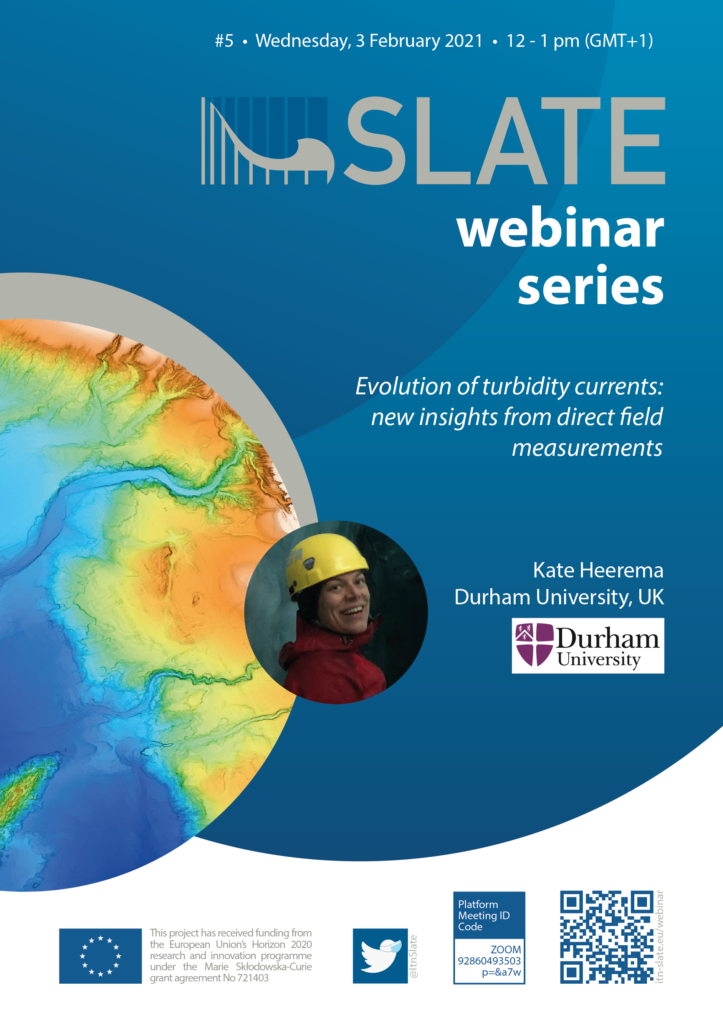
Underwater sediment density flows, which include turbidity currents, are capable of transporting vast amounts of sediment, nutrients and pollutants to the deep-sea. These flows can be powerful, causing damage to seafloor infrastructure. Understanding their evolution over distance is thus important for risk assessments, as well as determining sediment fluxes. However, there are few direct, in-situ, measurements of these flows, ensuring they remain poorly understood. In this talk, three datasets are discussed with direct measurements of turbidity currents.
The first location is Monterey Canyon, offshore California. Analysis shows that their evolution depends on their initial velocity and the availability of easy-erodible substrate. Turbidity currents exceeding a velocity threshold can plateau with near-uniform velocities, running out over greater distances. The second locality is the Var Canyon-River system, France. Nearshore measurements are used to determine turbidity current velocity structures, and how these develop over distance. Efficient self-organisation occurs within 10 km, after which the original trigger is indiscernible. This has important implications on interpreting turbidity current deposits. The last location is Bute Inlet, British Columbia, and is one of the most complete studies. This dataset entails source-to-sink direct measurements, combined with sediment cores. These data allow for a unique analysis of turbidity current activity over space and time. The current-day channelized system is highly active with yearly events, although these events are low magnitude. In contrast, the distal system shows high magnitude events occurring on centennial time scales.
- Wednesday, 3 February 2021
- 12 pm – 1 pm (GMT+1)
- via ZOOM
- permanent Zoom Link
- ID: 928 6049 3503 Code: p=&a7w
Webinar Flyer:


